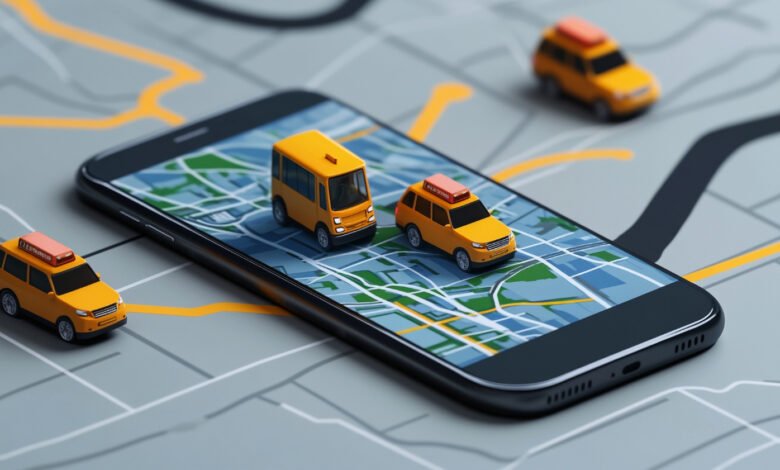Leveraging Technology to Improve Taxi App Development Services

The taxi industry has undergone a significant transformation over the past decade. With the integration of cutting-edge technology, taxi app development have become more efficient, customer-focused, and accessible. From GPS-enabled tracking to AI-driven ride allocation, technology has reshaped how taxi services operate, providing unparalleled convenience and satisfaction to customers and businesses alike.
This blog explores the ways in which technology can improve taxi services, highlighting the innovative tools and strategies that are setting new industry standards.
1. Streamlining Booking Processes
1.1 User-Friendly Mobile Apps
Mobile apps have revolutionized the way customers book taxi rides. With intuitive interfaces, users can book rides in just a few taps. Features like ride scheduling, fare estimates, and real-time tracking enhance convenience and eliminate the need for traditional taxi-hailing methods.
1.2 AI-Powered Matching
AI algorithms ensure efficient ride allocation by analyzing factors such as driver proximity, traffic conditions, and demand patterns. This reduces wait times for customers and ensures optimal resource utilization.
2. Enhancing Navigation and Route Optimization
2.1 GPS and Real-Time Navigation
Global Positioning Systems (GPS) have become a cornerstone of modern taxi services. Drivers can navigate unfamiliar routes with ease, ensuring quicker travel times and improved customer satisfaction.
2.2 Traffic Analytics
Integration with traffic management systems allows taxi apps to provide real-time updates on road conditions. This enables drivers to avoid congested areas and take the fastest route to the destination.
3. Improving Payment Systems
3.1 Cashless Payments
The integration of multiple payment gateways, such as credit/debit cards, digital wallets, and net banking, has streamlined the payment process. This flexibility enhances the customer experience and reduces reliance on cash transactions.
3.2 Fare Transparency
Technology ensures fare transparency by providing upfront fare estimates. Customers are informed of the cost before booking, eliminating disputes and building trust in the service.
4. Prioritizing Safety and Security
4.1 Driver Verification and Background Checks
Advanced technology facilitates rigorous driver screening processes, including background checks and identity verification. These measures ensure customer safety and build confidence in the service.
4.2 SOS Features
Modern taxi apps include SOS buttons that allow users to alert emergency contacts or authorities during a ride. This feature provides peace of mind to passengers, particularly during late-night travel.
4.3 Ride-Sharing Safety Enhancements
Technology enables features like sharing ride details with friends or family and live ride tracking, which ensure that someone else is always aware of the passenger’s journey.
5. Optimizing Fleet Management
5.1 Real-Time Fleet Tracking
Fleet managers can monitor their vehicles in real time, ensuring that drivers are following designated routes and operating efficiently.
5.2 Predictive Maintenance
IoT devices installed in vehicles can monitor engine health, tire pressure, and fuel levels. These insights allow operators to perform maintenance before issues arise, reducing downtime and operational costs.
6. Adopting Eco-Friendly Practices
6.1 Electric and Hybrid Vehicles
The shift toward electric and hybrid taxis is driven by both environmental concerns and government regulations. Technology plays a pivotal role in integrating these vehicles into fleets and optimizing their charging cycles.
6.2 Carbon Offset Tracking
Some taxi apps now offer carbon offset options, allowing customers to contribute to environmental sustainability efforts by tracking and compensating for their carbon emissions.
7. Leveraging Data Analytics
7.1 Understanding Customer Behavior
Data analytics allows companies to study customer preferences, such as ride frequency, preferred destinations, and payment methods. This information can be used to create personalized offers and improve customer retention.
7.2 Demand Forecasting
Predictive analytics helps taxi operators anticipate demand surges, such as during holidays or peak hours. This ensures adequate driver availability and improves overall service reliability.
8. Enabling AI and Machine Learning
8.1 Personalized Experiences
AI can provide tailored experiences by recommending frequently visited locations or suggesting preferred ride types based on past behavior.
8.2 Fraud Detection
Machine learning algorithms can identify fraudulent activities, such as fake bookings or unauthorized access, enhancing the security of taxi services.
9. Offering Multi-Modal Transportation
9.1 Integration with Public Transport
Many taxi apps now include features that allow customers to combine taxi rides with public transportation options. This seamless integration simplifies travel and reduces overall costs for users.
9.2 Ride-Sharing and Pooling Options
Ride-sharing features encourage passengers heading in the same direction to share rides, reducing costs and environmental impact.
10. Enhancing Customer Support
10.1 Chatbots and AI Assistants
AI-driven chatbots provide 24/7 support, addressing customer queries and resolving issues promptly. This reduces the need for human intervention and speeds up problem resolution.
10.2 In-App Feedback Systems
Customers can provide instant feedback on their ride experience through app-integrated rating and review systems. This feedback is invaluable for service improvement.
11. Promoting Accessibility and Inclusivity
11.1 Features for Differently-Abled Passengers
Taxi apps now include features such as wheelchair-accessible vehicles and voice-command capabilities to cater to differently-abled users.
11.2 Multilingual Support
Offering apps in multiple languages ensures that non-native speakers can use the service with ease, expanding the user base.
12. Future Trends in Taxi Services Technology
12.1 Autonomous Vehicles
Self-driving cars are poised to revolutionize the taxi industry. Though still in development, these vehicles promise to reduce labor costs and enhance safety.
12.2 Blockchain for Secure Transactions
Blockchain technology ensures secure and transparent transactions, minimizing the risk of fraud in payment systems.
12.3 5G Connectivity
With faster and more reliable internet connectivity, 5G enables real-time communication between vehicles, apps, and fleet managers, improving overall service efficiency.
Conclusion
Leveraging technology to improve taxi services is not just a trend—it’s a necessity in today’s fast-paced, digital-first world. From enhancing customer experience to streamlining operations, technological advancements are driving the industry toward greater efficiency, reliability, and sustainability.
By adopting modern tools such as AI, IoT, and data analytics, taxi service providers can stay ahead of the competition while meeting evolving customer expectations. As cities continue to grow and urban mobility demands rise, the role of technology in shaping the future of taxi services will only become more prominen




